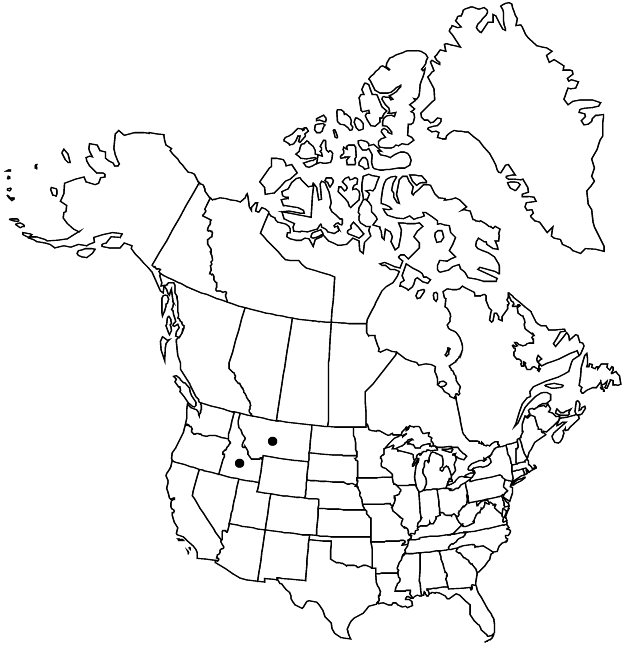Sedum borschii
Sedum N. Amer., 298. 1975,.
Herbs, perennial, tufted, glabrous. Stems decumbent, lateral branches from proximal axils, rosettes formed in proximal axils (giving rise to flowering shoots). Leaves alternate, (loosely imbricate), divergent, sessile; blade green, not glaucous, obovate or elliptic, rarely lanceolate, subterete, 4.7–7.5 × 2.5–3.4 mm, base not spurred, not scarious, apex obtuse, (surfaces finely papillose marginally). Flowering shoots ascending, appearing angled when dry, simple or branched, 4.7–6 cm; leaf blades elliptic-oblong or oblanceolate, base not spurred; offsets axillary rosettes only basally. Inflorescences cymes, 3–15-flowered, 2–3-branched; branches not or only slightly recurved, not forked; bracts (2–3), similar to leaves, smaller. Pedicels absent or to 0.1 mm. Flowers 5-merous; sepals erect, basally connate, yellow-green, ovate, equal, ca. 2 × 15 mm, apex acute or obtuse; petals widely spreading, distinct, yellowish green, lanceolate-elliptic, not carinate, 5–6.5 mm, apex acute with minute mucronate appendage; filaments yellow; anthers yellow; nectar scales yellow to orange, rarely pale yellow to greenish white, square or ± square. Carpels widely divergent in fruit, connate basally, brown. 2n = 32, 43–51, 45–54, 50.
Phenology: Flowering spring–summer.
Habitat: Cliffs and rocky slopes on a variety of rocks, sites which are too hot and dry for trees
Elevation: 1200-2200 m
Discussion
The mature carpels of Sedum borschii have prominent lips along the adaxial suture.
Selected References
None.
